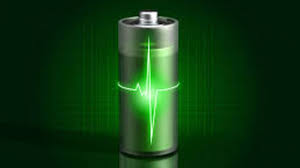There are different forms of lithium-ion batteries depending on the materials used in the internal and external composition of the battery. These materials determine the performance and capacity of the battery. However, despite the differences, all lithium-ion batteries share characteristics that make these batteries more reliable than other types of rechargeable batteries. From having higher energy density to faster charging rates and longer lifetimes, lithium-ion batteries are considered better and therefore more reliable in commercial applications.
What are the advantages and limitations of lithium-ion batteries?
All types of lithium-ion batteries offer users a variety of advantages and limitations compared to other rechargeable battery types. Let’s take a look below!

Benefits of Lithium Ion Batteries:
Extended service life
The life of a battery is determined by the number of charge and discharge cycles it can handle throughout its service time. Low-end lithium-ion batteries can manage hundreds of charge cycles, while regular variants can hold over 1000 cycles before losing about 30% of their original maximum capacity. The highly advanced version of the Li-Ion battery is capable of handling up to 5000 charge-discharge cycles, allowing it to last longer than other battery types.
faster charging
Li-Ion batteries have been shown to charge faster than Ni-Cd and Ni-MH batteries or rechargeable alkaline batteries; it all depends on the hardware specifications of the device using the battery and the mAh capacity of the Li-Ion battery, a fully charged The effect is about one to two hours.
Improve energy efficiency
Energy efficiency may be the main benefit of using lithium-ion batteries compared to other types of rechargeable batteries. Since the battery has a higher energy density than other batteries, relative to its physical size and low self-discharge rate, energy efficiency is improved.
smaller
Lithium-ion batteries have a higher charge capacity relative to their physical size, so they can store a lot of energy in a small space. This makes them more portable and smaller than other battery types. Portability makes it easy to use in traditional consumer devices such as smartphones and laptops.
Limitations of Li-Ion Batteries:
high manufacturing cost
Lithium-ion batteries tend to be expensive to produce as batteries can cost around 40% more to manufacture than NiMH batteries. Factors such as expensive on-board computer circuits that regulate the voltage within a safe range contribute to this hefty price tag.
Security risks
Over the past few years, lithium-ion batteries have been reported to be a safety hazard because they are prone to overheating. This overheating can lead to thermal runaway, igniting a flame that can further lead to an explosion.
aging defects
Regardless of whether the battery is in use or not, once it leaves the factory, the battery starts to deteriorate, which is called the aging effect.
Is there a better battery than Li-Ion?
In fact, breakthroughs that could replace lithium-ion batteries are already known, but since they haven’t been incorporated into commercial use like this one, we can’t say anything better at the moment. Lithium-ion batteries will continue to be reliable for a while now, and there doesn’t seem to be any rush to leave.
Solid state lithium battery
This type of battery is capable of operating at supercapacitor levels, allowing users to fully charge or discharge the battery in less than 10 minutes. They provide maximum stability, but at the expense of electrolyte transport. This feature makes solid-state lithium-ion batteries suitable for electric vehicles because they are safer and more stable than current batteries. The battery technology can adapt to temperatures as low as -30 degrees Celsius to 100 degrees Celsius. While solid-state batteries have not yet been perfected for commercial use due to problems with electrolytes, they appear to be an excellent opportunity to improve lithium-ion batteries.
foam battery
Prieto Battery Company has outdone itself by inventing a battery that uses a copper foam compound. Due to the use of a flammable electrolyte, the battery is expected to provide the highest safety conditions. They will also offer longer lifetimes and faster charging with faster charging and greater energy density than lithium-ion technology. Compared to current battery technology, foam batteries are expected to be cheaper to manufacture and lighter in weight. However, the battery is not yet perfect, but something will be ready for it in the future.
>>>>>>>>>>>>>>>>Battery
Thanks for reading, hope it helps!
Friendly reminder: If you need to replace the battery, this battery store will be a good choice: www.batteryforpc.co.uk





